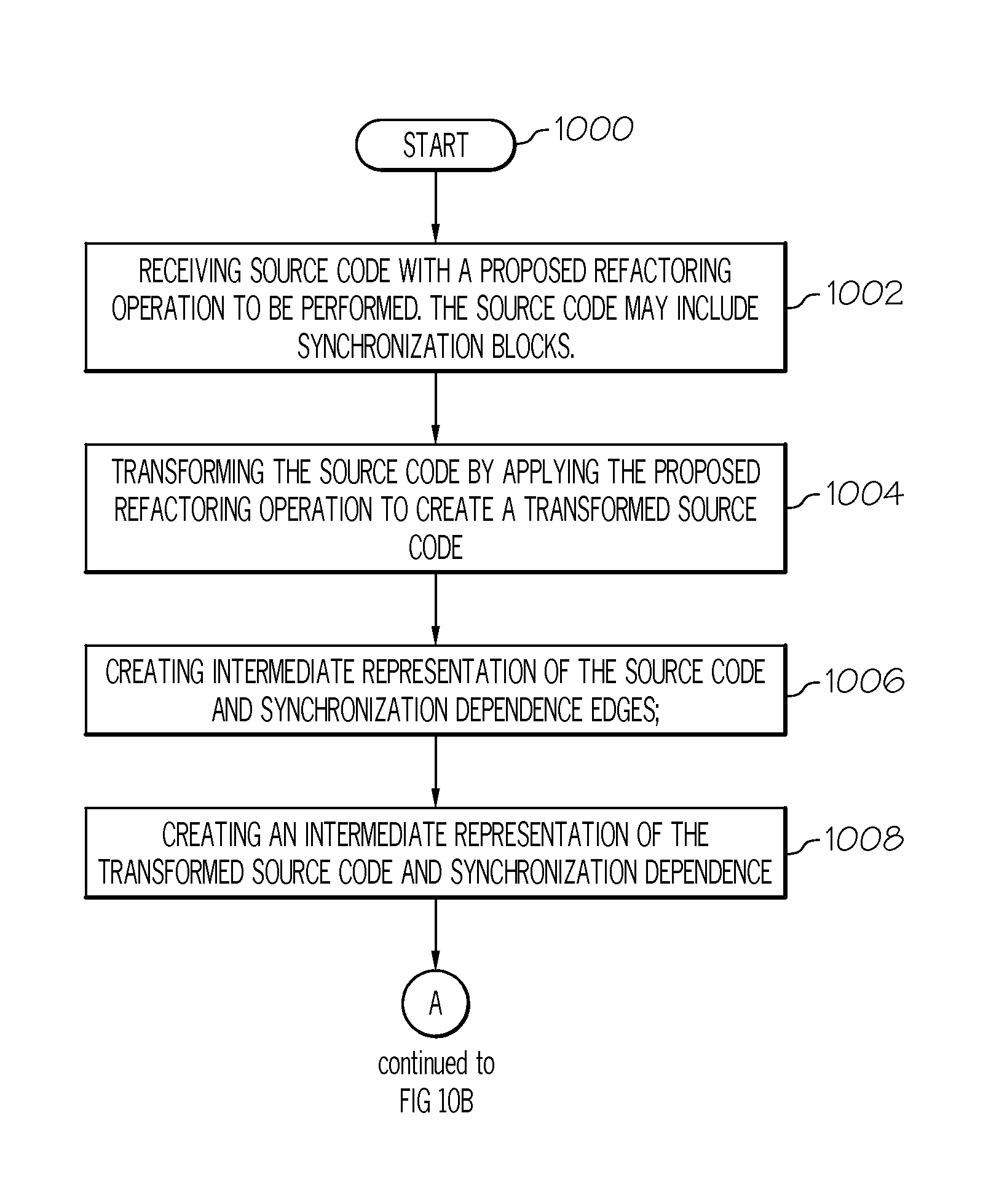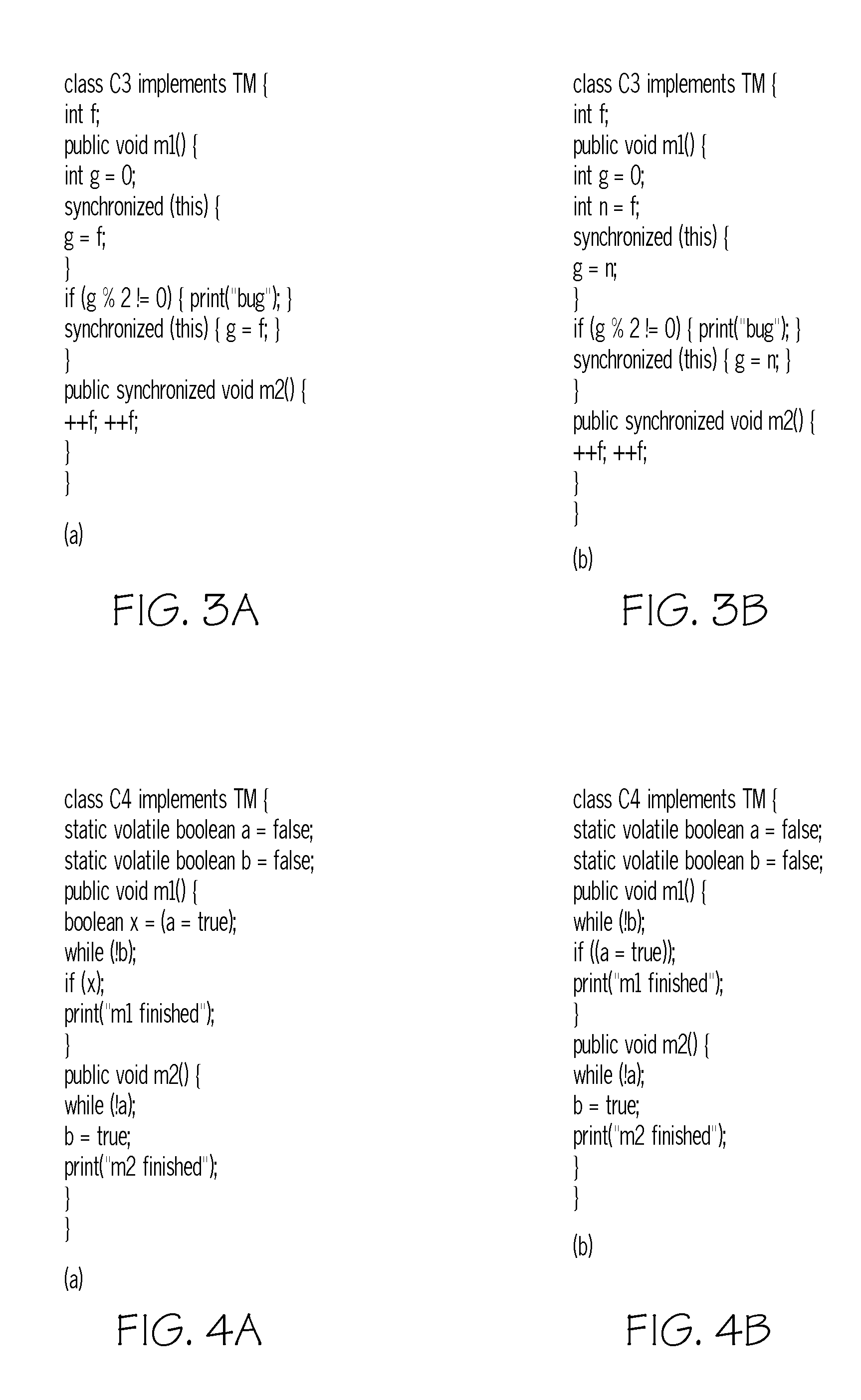Correct refactoring of concurrent software
a technology of concurrent software and refactoring, applied in the field of programming, can solve problems such as unexpected new concurrent behavior of refactored programs, and achieve the effect of convenient implementation and precise correctness results
- Summary
- Abstract
- Description
- Claims
- Application Information
AI Technical Summary
Benefits of technology
Problems solved by technology
Method used
Image
Examples
example structure
[0032
[0033]Each example contains a class implementing an interface TM (for “Two Methods”) with methods m1( ) and m2( ). A harness provided in the Section Below entitled “Execution Harness” executes m1( ) and m2( ) in parallel, exposing the concurrency bugs introduced by the refactorings. In all the example figures, part (a) shows the original program and part (b) shows the refactored program. The code targeted by the refactoring is highlighted in dark gray in part (a) of each figure, and code changed by the refactoring is highlighted in light gray in part (b).
[0034]Pull Up Members
[0035]The PULL UP MEMBERS refactoring [11] can introduce concurrency bugs when it mishandles the synchronized method qualifier. Consider the example program of FIG. 1(a). The program includes a class Super that declares two fields x and y. Subclass Sub of Super declares two static methods m( ), and n( ) that are respectively invoked by the methods m1( ) and m2( ), and hence may be run in parallel. Note that...
PUM
 Login to View More
Login to View More Abstract
Description
Claims
Application Information
 Login to View More
Login to View More - R&D
- Intellectual Property
- Life Sciences
- Materials
- Tech Scout
- Unparalleled Data Quality
- Higher Quality Content
- 60% Fewer Hallucinations
Browse by: Latest US Patents, China's latest patents, Technical Efficacy Thesaurus, Application Domain, Technology Topic, Popular Technical Reports.
© 2025 PatSnap. All rights reserved.Legal|Privacy policy|Modern Slavery Act Transparency Statement|Sitemap|About US| Contact US: help@patsnap.com



